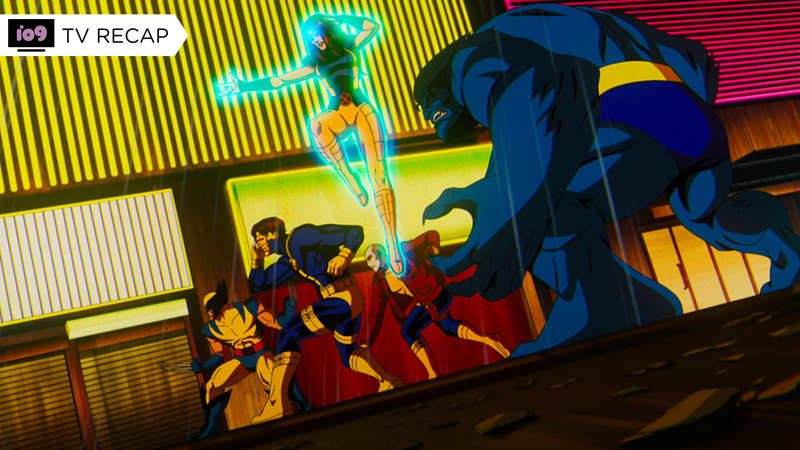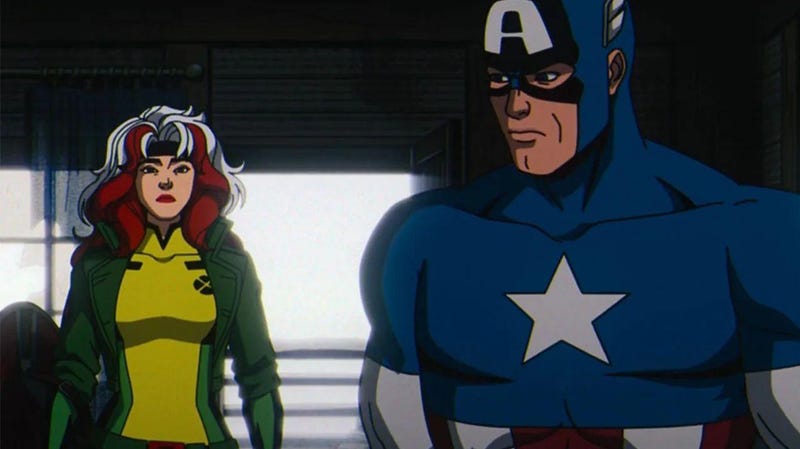
The concept of tolerance has weighed heavily upon Disney+ seriesX-Men ‘97. And now as the world and what is left of mutantkind looks upon the ruins of Genosha, the series is ready to grit its teeth and show some fangs, giving us righteously bitter examination of just where the morals of that tolerance—the morals cast in the shadow of its greatest idealist, Charles Xavier—have gotten its heroes and villains alike.

X-Men ‘97 gave itself room to breathe last week in “Lifedeath Part 2,”even if that room wasn’t exactly afforded to the characters who needed it in that episode. But in distancing “Bright Eyes” from the immediate fallout of “Remember It” by even just a few weeks lets the event sit with the audience and our characters alike: and the grief and anger that lingers here hits all the harder for it. If Genosha represented the very best of Charles Xavier’s dream—a home where mutants could exist as themselves, be seen by the world as themselves, and embraced as just another part of the planet—then the aftermath of its destruction plays out across “Bright Eyes” as a refutation of that dream’s ultimate equivocation by asking a simple question. Where does tolerance get you in the face of genocide?
This idea deftly plays out across the episode’s opening beats, from Jubilee’s futile frustration that Rogue didn’t attend Gambit’s funeral, to Cyclops’ frosty conversation with the U.S. president—a moment where once again X-Men ‘97 finds itself oddly best suited for the time in which it is releasing even without intention, as we see a world leader prevaricate over optics and elections instead of taking a stance against the near-extinction of a people. We see it again, when the X-Men travel to Genosha to try and aid relief efforts, only for Trish Tilby to re-appear—seemingly to offer comfort, but really to play the human face of asking our heroes and the survivors if it’s worth looking angry after everything that’s happened, to ameliorate their feelings amid the ruins of that amelioration’s most profound of failures. We see it again when Bobby and Jubilee visit the former’s mother, to finally reveal his mutant heritage, only for her to blessedly, casually, embrace his identity... and immediately tell him he has to keep being a mutant quiet, because good heavens, what will the shareholders think?

But while this is all extremely compelling, ‘97's best bite is saved for not dealing with the human optics, but the superhuman. As a furious Rogue tears through U.S. Army facilities trying to hunt down Trask and Gyrich—and the mysterious “OZT” that connects them both—she eventually finds herself crossing paths with none other than Captain America. Steve has been looking into what OZT is himself, and notes to Rogue in frustration that Gyrich has been extradited from U.S. custody by the entity, tying his hands further. But even in noting the red tape of American politics—not like that’s stopped Steve from doing the right thing before!—Steve remains a tool of compromise in X-Men ‘97's story, when he begs Rogue to try and step back from her anger, no matter how valid she is in feeling it, and when in turn he tells her that he cannot help her continue the hunt for Gyrich outside of U.S. borders. Again, it’s that word again, the optics of it all. Captain America can’t be seen in hostile action in a foreign country unless it’s in the interest of America, and he most definitely can’t be seen as a friend of mutants in the process. And as Rogue rightfully tells him (after hurling his shield into a distant mountain, showing it for all its real worth in the moment), in not taking a definitive stance, Steve, and the image of Captain America as an ideal, is taking one: a cowardly, deplorable stance in the face of genocide.
It may have taken the hurt and horror of Genosha to lift the lid from the X-Men’s eyes, but it’s finally lifting—even as it’s already lifted from their enemies’ eyes. Of course, we’ve known this from the very beginning: in imprisonment in the very first episode, Gyrich gloated to the gathered X-Men that “tolerance is extinction.” We know it’s the thesis the series will explore in its denouement, as we head into a three-part finale to this season with that phrase as its title. Time and time again in “Bright Eyes,” mutants are told to keep tolerating, and time and time again the forces gathering against them are shown growing in power and ego because they’ve long abandoned that idea themselves. So as Rogue re-teams with the rest of the X-Men to chase Gyrich and the leads of OZT and Trask all the way to Madripoor, we see what’s been gained for the enemies of mutant kind in being shielded by humanity’s appeal for tolerance.

The X-Men find Trask’s facility filled with Sentinel technology unlike anything they’ve seen before—more advanced, more human-like, seemingly impossible for the material of the time. Even Trask himself twists and turns after Rogue lets him seemingly commit suicide, only to terrifyingly transform into a shambling human-Sentinel corpse that lays the X-Men out in seconds, almost adding them to Genosha’s death toll if not for the timely return of Cable (it wouldn’t be X-Men without personal drama, and poor Scott isn’t even given the time to deal with the realization that Cable has always been his son). But “Bright Eyes” lays out its best trap last for the audience, while the X-Men are left to ponder just where tolerance has left them in the face of this overwhelming enemy. Trask wasn’t working for Sinister; Sinister was working for someone else. And as we cut away to a strange, pink-hued being holding an alive Magneto captive, we learn the true mastermind behind it all is none other than Bastion.
Introduced in 1996 ahead of the franchise-wide event “Operation Zero Tolerance,” in the comics Bastion is the apex of the Sentinel project: an unholy amalgam of the Master Mold and Nimrod to create the ultimate anti-mutant weapon. With all the power of a sentinel in human form, in “Operation Zero Tolerance,” Bastion develops the Prime Sentinels—much like what we see happen to Trask this episode, nano-technology that can transform an ordinary human into a mutant killing machine. In many ways, it lets the mask of what the Sentinels always represented truly fall: no longer giant, robotic, monstrous forms—familiar but distant and extrapolated—but the image of a human, one given the power to exterminate mutantkind with its own hands. The endgame of where human finally leads, and the ultimate folly of Xavier’s dream of assimilation.

But as the X-Men stare down the barrel of extinction once more, they too have realized where tolerance gets their cause: six feet in the ground. With that lesson bitterly learned, they just have to make it out alive to prove to the world that mutantkind’s liberation will come from its own hands.
Want more io9 news? Check out when to expect the latest Marvel, Star Wars, and Star Trek releases, what’s next for the DC Universe on film and TV, and everything you need to know about the future of Doctor Who.
Comments
Post a Comment